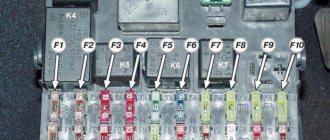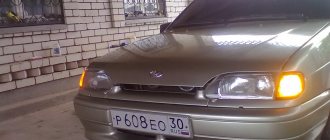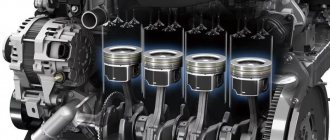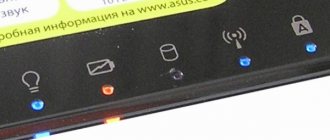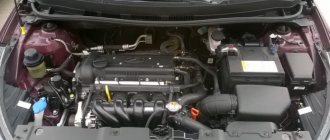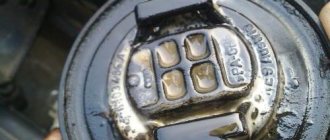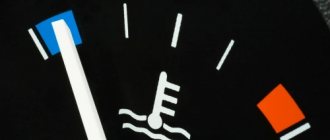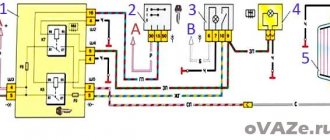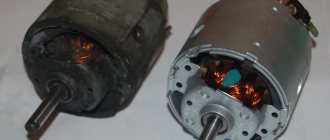As you know, various problems can occur during the operation of a car. Moreover, in addition to mechanical problems, many breakdowns can be associated with the electrical part. One of these malfunctions, which can significantly complicate the operation of the vehicle, is the failure of the direction indicators (turn signals).
In fact, if the turn signals do not work, this problem can pose a certain danger, since the driver needs to maneuver and constantly indicate to other road users the direction of his movement. It turns out that if the turn signal does not work, you need to constantly remember this when driving in the usual mode.
Moreover, a driver with faulty turn signals may be fined by the traffic police. Next, we will look at what to do if the turn signals do not work, how to determine the cause of the malfunction, and also how this malfunction can be eliminated.
Why turn signals on a car don't work
So, if the turn signals fail while on the road, this can be determined by the absence of clicks; the turn signal indication on the dashboard may also disappear. The direction indicators on the panel may also flash too often, stay on constantly, etc.
In such a situation, there can be two options: only the turn signals do not work or the emergency lights do not work. This needs to be checked immediately, because if the direction indicators do not work, but the hazard warning lights are in order, in this case you should try to turn on the hazard lights immediately. This is necessary in order to attract the attention of other road users and identify the vehicle as faulty.
Next, having reduced the speed, you should make sure that there are no obstacles and change lanes with caution, since it is not known for certain whether the emergency lights are working or not (even if, after turning on, clicks are heard and the turn indicators on the instrument panel blink).
The next step is to get out of the car and check whether the hazard lights are working/not working. The performance of the turn signals and turn signal repeaters themselves is also assessed. In any case, it is better to additionally set up a reflective triangle. Then you can proceed directly to trying to solve the problem.
Of course, you can continue driving to the nearest service station, but in this case you need to be prepared for the fact that you will need to give signals to inform other drivers and road users while simultaneously driving the car. Of course, this method is not suitable for everyone. You can also use an on-site repair service, but such a service can be prohibitively expensive.
- In this situation, it is better to try to fix the breakdown right on the spot. To do this, you need to start checking with the turn signal and hazard warning relays. The main difficulties may be related to the fact that the specified turn relay on different cars can be located both under the hood and in the cabin (in the area of the steering column or under the instrument panel).
To accurately determine the installation location of the turn signal relay, it is advisable to study the manual or use a smartphone/tablet (provided you are connected to the Internet). Typically the turn signal relay is located on the steering column or in the fuse box under the instrument panel.
Please note that on some cars the turn signal relay is located in the emergency button. In any case, these locations are due to the fact that the driver should be able to hear the operation of the relay. Also, some cars may have a buzzer to duplicate the turn indicators.
Having found the relay, you will need to disconnect the wires from it. Again, often the relay simply “sticks”, that is, turning it off and turning it off again allows you to return the device to normal. Cleaning the contacts also helps. If this does not solve the problem, then repair or replacement of this element will be required.
- By the way, if we consider the repair of the turn relay, the possibility of such repair will depend on its type. For example, a VAZ turn relay with a bimetallic plate is simple and easy to repair. The turn relay circuit includes a main element - a bimetallic plate, which is integrated into the circuit for passing current through the turn lamps.
When the hazard lights or turns are on, the plate is cold and closes the signal light circuit. Further, during the process of heating the bimetallic plate with current, the plate bends. Bending causes the relay contact to open, no current flows and the lamps turn off.
So, if the lamp burns out, the voltage is higher, the plate heats up more slowly and the blinking period will increase. If there is a short circuit in the circuit, the lamps will flash quickly. However, despite all its simplicity, today a combination relay is also actively used, which is equipped with an additional electronic circuit. These relays are less reliable and fail more often. These relays are usually not repaired.
Causes of direction indicator malfunctions
Blown fuse. If the alarm stops working with the directional indicators, there is a high probability that the cause is in the fuse channel.
The fuse must only be replaced with a fuse of suitable rating. Exceeding the recommended value, the “splash” setting may lead to a vehicle fire. For this reason, we recommend compliance with the principles of fuse replacement!
- Damage to the steering column switch.
- Relay direction indicator breakdown.
- Damage to the hazard light switch.
- Open circuit. If all direction indicators do not work, check the direction indicator relay first. If the direction indicators stop working on only one side, the problem lies in the wires from the switch to the bulbs.
- Oxidized contacts, broken wires. The shield does not work if the resistance to the circuit differs significantly from the nominal resistance. To provide energy, it is necessary to exceed a certain power level of energy. If the microprocessor inside the relay indicator direction, due to the increased resistance, does not register sufficient current, the lights will not turn on.
Device
The indicator's operation includes:
- Signal switch. Its task is to close the contact between the light bulbs. For example, turning on a switch causes one of the correct "+" battery bulb contacts to short circuit. The “minus” bulb represents the point of connection with the “ground” (the common point for all bulbs in the block headlight);
- Relay direction indicator. There is a regular electromagnetic relay inside the case, but it is controlled by a built-in circuit. This element provides interrupted power to the coil. The second important function is lamp control. The Microchip has a feedback function so that when the light bulb burns out, it records the drop in power of the receivers and begins delivering electricity at double the frequency. If the direction indicators are working correctly, the bulbs will flash about 1 time per second. Most modern cars, including VAZ models, use a 3 PIN direction indicator relay. Accordingly, 1 contact is “ground”, 2 is the battery power supply, 3 is the output to the steering switch;
- Warning lights on the dashboard. One or two light bulbs (one on each page) are connected in parallel to the main line. Direction indicators will operate without light signaling, so this system should not be considered among the possible causes of failure.
Connection diagram
The simplest directivity connection diagram.
The film discusses in detail the principle of turning according to directional instructions, as well as the role of the email button in the operation of the system.
Other turn signal malfunctions
As for other problems, in addition to the relay, we can highlight: burnout of lamps, both main and turn signal indicators, malfunction of LED “strips,” malfunction of the turn switch on the steering column, malfunction of indicator lamps on the instrument panel, problems with the hazard warning switch, exit from building control blocks, etc.
The main symptoms that allow you to localize the malfunction:
- if the hazard warning lights are working but the turn signals are not active, then there is a high probability of a malfunction of the turn switch;
- The turn signals work, but the hazard warning lights do not turn on, this may be due to a malfunction of the hazard warning light button;
- The turn signals and emergency lights do not work - the turn signal relay is faulty, poor contact, blown fuses, etc.;
- The turn indicators flash on the panel more often than usual - there is a short circuit in the wiring or the turn lights;
- indicators on the instrument panel blink with less frequency - there has been a break in the wiring leading to the turn signal lamps, the lamps themselves have burned out, problems with contact in the area where the lamps are installed or in the connectors, failure of the LEDs, etc.
It is not difficult to guess that there can also be many reasons, starting from damage to the wiring and ending with moisture. However, in practice, the turn switch on the steering column often turns out to be problematic. To replace it, you will need to remove the plastic steering column cover.
If we look at the light bulbs and wiring, difficulties may arise with the fact that this system on many cars is also responsible for the side lights. This means that the wiring is routed throughout the cabin, and the lamps are on the trunk lid.
We also recommend reading the article about what an immobilizer is. From this article you will learn what functions an immobilizer performs on a car, what advantages this solution has, and also what type of immobilizer is better to choose.
In fact, you need to look at the wires under the sills, as well as where the wiring passes from the body to the trunk lid. It is also necessary to inspect the wiring in the headlight connectors. Usually, if one lamp does not light, it is necessary to “ring” the lamp and check the contacts. If there are diodes on the car, it is better to change them immediately.
We also add that the hazard warning switch may also require special attention. It often happens that when you turn on a left or right turn, all the lamps flash at once. The cause may be either a faulty turn switch on the steering column or the hazard warning switch.
Also in the list of problems, when the turn signals do not light up, a failure of the control unit is noted. This unit is installed on modern cars of certain brands.
The advantage of the system is constant monitoring; if lamps burn out or fail, the unit records an error and notifies the driver. However, repairing such a system is more difficult and expensive. Computer diagnostics, error decoding, etc. are required.
You can also highlight the blown fuses of the turn signal and hazard warning system. In this case, it may seem that replacing the fuse is sufficient. In fact, fuses rarely blow without reason, which means in-depth diagnostics are still necessary. Otherwise, the turn signals may fail again at the most inopportune moment.
Self-diagnosis of car lighting devices
There are several situations in which you can determine that optics need diagnostics:
- The turns do not flash, but light up. Such a malfunction indicates the failure of the relay, in particular, we are talking about its electromagnetic component. The electromagnet itself could close in one of the positions, as a result of which it cannot return to its initial state.
- The turning lights flash very quickly or very slowly. In this case, the problem may lie not only in the relay. In some cases, this type of malfunction occurs when the driver uses inappropriate lighting sources. So when purchasing new light bulbs, you need to make sure that they correspond to the rating set by the car manufacturer.
- The optics don't work at all. That is, the turning light bulbs do not flicker, and the corresponding indicators on the dashboard also do not light up. In addition, there are no characteristic clicks that appear when turning on the turning lights. With such symptoms, there can be many reasons for the problem; we will tell you more about their diagnosis below (the author of the video is the Steel Horse channel).
This is interesting: Basic methods for replacing a license plate light bulb on a car
As for diagnostics, it is performed in several stages:
- First of all, you need to make sure that all sensors and indicators on the device are working. If they do not function, then it is necessary to diagnose the safety devices.
- If all devices are operating in normal mode, then you next need to turn on the light alarm button and diagnose all light sources in the headlights. That is, check the front, rear, and side (if any) lights.
- If the alarm does not function when activated, you need to check the functionality of the relay, and also check the power supply at the terminals. To do this, remove the relay from its mounting location, and then, using a test light, connect one of its contacts to the installation site (to the positive), and the other to the car body or battery. There is no need to turn on the ignition. If there is no power, then most likely the reason lies in a failed safety device, a broken hazard warning button, or a damaged electrical circuit. Also, the essence of the problem may lie in poor contact in the connecting plugs.
- If there is a plus on the contacts, then try shorting the two relay terminals using copper wiring. If all electrical circuits, as well as the connection plugs, are working properly, then all turn signals should light up. In this case, the fault must be looked for in the relay.
- If the lights do not light up after the steps you have performed, then most likely the cause of the malfunction lies in the emergency light control button. However, in practice this happens quite rarely; there is often a short circuit in the circuit. By the way, it is a short circuit that can lead to a breakdown of the relay, therefore, before replacing the failed element, you need to eliminate the short circuit.
- If the emergency signal is functioning, this indicates that the safety devices and relays are working; accordingly, you need to start diagnosing the button itself. First of all, you need to diagnose the positive terminal, as in the case of checking the relay, while the ignition, as well as the hazard warning button, must be activated. If the diagnostics showed that there is no plus, this indicates that the button itself needs to be checked in more detail. Remove it from its seat and check the connection circuit. If there is no power, then you need to look for a break in the wiring from the tidy to the button itself. If there is power, then it will be necessary to short-circuit the terminals at the installation site, the ignition does not turn off, after which the direction indicators must be activated (on either side). When the lighting sources are turned on, the control button must be replaced, but if there is no power, then you need to check the power in the emergency relay. If there is no power, the problem most likely lies in a break in the connecting electrical circuit from the control key to the block with safety devices.
This is interesting: What kind of oil and how to fill it in the power steering: useful tips and recommendations
Emergency button - how does it work and function? + video
Every car has a hazard warning button. When you press it, the direction indicators and two repeaters located on the front fenders begin to flash simultaneously, resulting in a total of six lights. Thus, the driver warns all road users that he has some kind of unusual situation.
Its use is mandatory in the following situations:
- if a traffic accident occurs;
- if you had to make a forced stop in a prohibited place, for example due to a technical malfunction of your car;
- when in the dark you are blinded by a vehicle moving towards you;
- the hazard warning lights are also turned on in the event of towing by a motor vehicle;
- when boarding and disembarking a group of children from a specialized vehicle, an information sign must be attached to it - “Transportation of children.”
What does the hazard warning button hide?
The design of the first light alarms was quite primitive; they consisted of a steering column switch, a thermal bimetallic breaker and light direction indicators. In modern times, things are a little different. Now the alarm system consists of special mounting blocks, which contain all the main relays and fuses.
An emergency alarm shutdown button with outputs for reconnecting lighting circuits (in case of a change in operating mode) has also appeared.
Of course, we cannot fail to mention the main components thanks to which the driver can notify other road users about an ongoing unusual situation - lighting devices.
They include absolutely all the direction indicators that are on the car, and two additional repeaters, the latter being, as already mentioned, on the surface of the front wings.
How does the alarm circuit work?
Due to the large number of connecting wires, the modern alarm circuit has become significantly more complicated compared to its prototype, and consists of the following: the entire system is powered only from the battery, so it can ensure its full operation even if the ignition is turned off , i.e. while the vehicle is parked. At this time, all the necessary lamps are connected through the contacts of the alarm switch.
The emergency lights stopped working
Hello everyone, tell me where to dig. The emergency lights suddenly stopped working, the turn signals work, when the alarm goes off, the lights blink, but there is no response from the emergency light button. All the indicators seem to be intact
The button sometimes fails. 99% her. new one costs a lot. used as a rule 500 re
Call the button or ask someone for experiments. If so, there is somewhere from the Impreza GD* - 500 rubles.
Were there any basic attempts to check, or did you immediately come here for advice?
I checked all the fuses, went to an electrician, who said that the power supply to the emergency lights needed to be redone, but I still don’t understand why. The VSP from the factory worked great and then suddenly this Kulibin decided to change it. That’s why I asked the question
They're electricians) So do you have a multimeter?
Yes, come to the disassembly, or the person over there has unsubscribed; he has it. Install it and see if it works, if so, then buy it right away!
We’re not in Moscow) it won’t work out that way
Well, you have to put the city in the signature)) So, there are no showdowns?
The emergency button receives power via two wires from 2 different fuses. One feeds the emergency light itself when it is on, and the other powers the turn signals when the emergency light is turned off.
Check all fuses again. And if you checked with a multimeter, then it’s better to pull out one at a time and look with your eyes.
And on topic - if there is nowhere to borrow a button, then pick up a multimeter, have the manual in front of your eyes, and sequentially follow the circuit and check. Well, or with the same manual for electricians.
Traffic regulations prescribe a special method of warning about maneuvers, which must be used if the turn signal lamps stop lighting on the road. Let's look at why turn signals don't work and how to eliminate the cause of the breakdown. We will talk about the design, operating principle and malfunctions of systems using turn signal relays based on integrated circuits. We will not consider old designs with bimetallic plates, as well as completely electronic systems, due to their specificity and low prevalence.
If only the front left or rear right turn signal on a car does not light up, the reason may be a burnt out light bulb, poor ground contact of the lights or a section of wire to the light bulb.
Is it possible to follow the flickering arrow?
Due to the fact that the meanings of the arrows coincide with the main traffic light signals, the same rules apply here:
- green - you can continue driving, flickering - indicates the imminent appearance of a prohibitory signal, but movement towards the flickering light is allowed;
- yellow – prohibits movement, except for situations when the driver completes a maneuver, and an emergency stop can lead to an accident;
- red – movement is prohibited.
It is worth noting that the yellow arrow in the additional section is usually absent; green turns to red after 3 seconds of flickering. When the green light is flashing, it is recommended that you stop rather than speed up to complete the maneuver. You can manage to follow the arrow, but end up at an intersection with a prohibitory signal. In this situation, the traffic police inspector has the right to issue the driver a fine from 1 to 5 thousand rubles or deprive the driver of his driving license for up to six months, depending on whether this is the first violation or a repeated one.
Accident when turning left at an intersection when one of the cars is already at the intersection
A²Ã°ÃÂøàòþ÷ýøúðõÃÂ, õÃÂûø ÃÂõûþò õú, ÃÂþñøÃÂðÃÂÃÂøùÃÂàÿþòõÃÂýÃÂÃÂÃÂ, à´Ã¾ÃµÃ·Ã¶Ã°ÃµÃ Ã´Ã¾ ÃÂõÃÂõôø ýàÿõÃÂõúÃÂõÃÂÃÂúð ø ÃÂþûÃÂúþ ÷ðàõü ýðÃÂøýðõàóþÃÂþòøÃÂÃÂÃÂàú üð ýõòÃÂÃÂ, þÿþòõÃÂðàôÃÂÃÂóøàÃÂÂÃÂðÃÂàôòøà¶ÃµÃ½Ã¸ÃÂ. › üðÃÂøýÃÂ, ÿþÃÂûõ ÃÂõóþ òÃÂÃ¿Ã¾Ã»à ½ÃÂõàÿþòþÃÂþÃÂ. ðòÃÂþüþñøûÃÂ, ôòøöÃÂÃÂà › þûþÃÂõ, ýõ òÃÂõóôð üþà¶Ã½Ã¾ ÷ðüõÃÂøÂÃÂ, ñÃÂòðÃÂàÃÂûÃÂÃÂðø úà þóôð üðÃÂøýð òÃÂÃÂúðúøòðõàýð A °Ã½Ã½Ã¾. àÃÂõ÷ÃÂûÃÂÃÂðÃÂõ ðòÃÂþüþñøûø ÃÂÃÂð ûúøòðÃÂÃÂÃÂÃÂ. ÃÂøýð þÿÃÂõôõûÃÂõÃÂÃÂàò ÷ðòøÃÂø üþÃÂÃÂø þàÿÃÂøÃÂÃÂÃÂÃÂÃÂòøà÷ýðúþò ÿÃÂøþÃÂøÃÂõÃÂð, ÃÂð÷üõÃÂúø , ÃÂøóýðûð ÃÂòõÃÂþÃÂþÃÂð.
